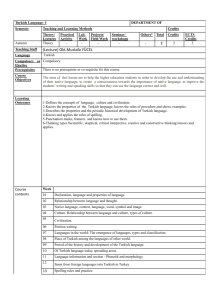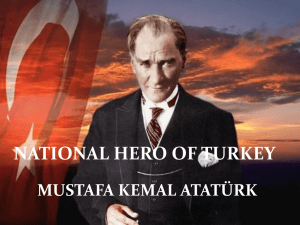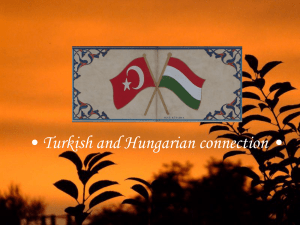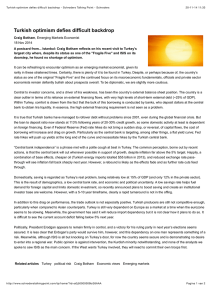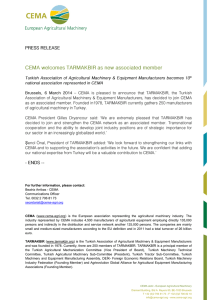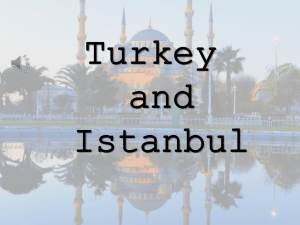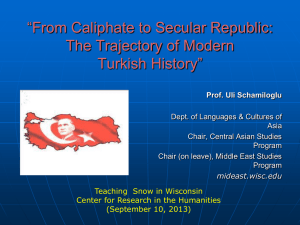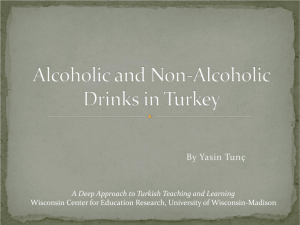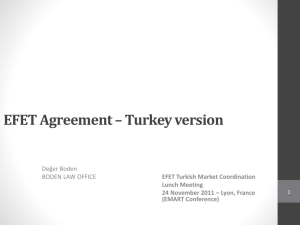*The Unknown Turks* By Clarence K. Streit
advertisement
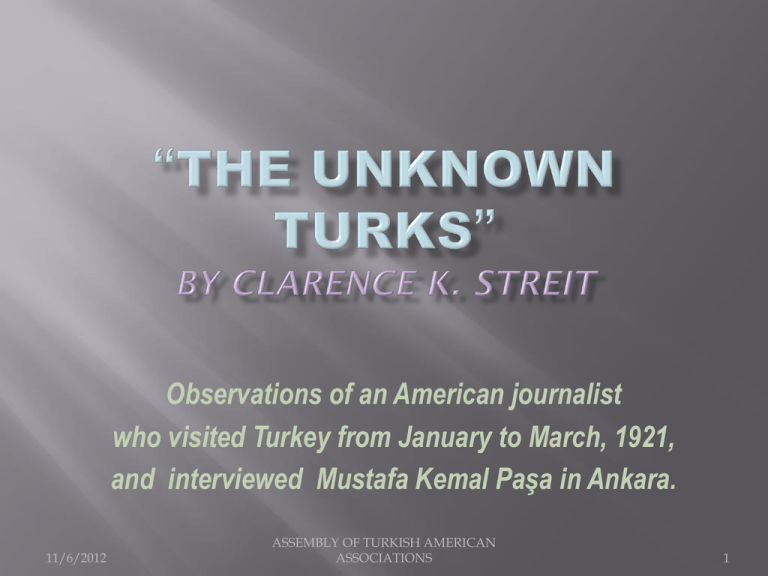
Observations of an American journalist who visited Turkey from January to March, 1921, and interviewed Mustafa Kemal Paşa in Ankara. 11/6/2012 ASSEMBLY OF TURKISH AMERICAN ASSOCIATIONS 1 11/6/2012 ASSEMBLY OF TURKISH AMERICAN ASSOCIATIONS 2 11/6/2012 ASSEMBLY OF TURKISH AMERICAN ASSOCIATIONS 3 11/6/2012 ASSEMBLY OF TURKISH AMERICAN ASSOCIATIONS 4 Born January 21, 1896 Died July 6, 1986 (90 yrs old) Occupation war correspondent University of Montana Alma mater The Sorbonne, France Oxford University , England Atlanticist, Union Now Notable work(s) 11/6/2012 ASSEMBLY OF TURKISH AMERICAN ASSOCIATIONS Worked for Philadelphia Public Ledger and later, the New York Times 5 Now that you know the journalist, our story can start. In 1983, prominent scholar Heath Lowry, professor of History at Princeton University, gets a phone call from a young Turkish diplomat , a former student of his. The diplomat says he had recently met a most remarkable man who had traveled to Ankara at the height of Turkish War of Independence and interviewed Mustafa Kemal Paşa (Atatürk after 1934). His name was Clarence K. Streit and he had written an unpublished manuscript. 11/6/2012 ASSEMBLY OF TURKISH AMERICAN ASSOCIATIONS 6 On his way to Ankara, the Nationalists’ Headquarters. (He later becomes a well known figure promoting Atlantic Federalism, the precursor of NATO.) 11/6/2012 ASSEMBLY OF TURKISH AMERICAN ASSOCIATIONS 7 A perilous journey: winter travel through wartime Anatolia Streit travels through Samsun, to Merzifon, Corum, Alac, Yozgat, Yahsihan and finally Ankara. Along the way, he stays in adobe-hut villages, towns, guest houses, and hans. In Ankara he is given a room first at Liberty Hotel, which is large enough to hold two single beds with windows containing several broken panes, in the dead of freezing winter. A few days later. He gets a room at Constitution Hotel, the best hotel in town, where he kept a rug on the window to stop the wind, but not the snow... 11/6/2012 ASSEMBLY OF TURKISH AMERICAN ASSOCIATIONS 8 Takes a snapshot of Anatolia in 1921 11/6/2012 Comparing that snapshot with today’s Anatolia should give anyone an honest appreciation of Ataturk’s reforms ASSEMBLY OF TURKISH AMERICAN ASSOCIATIONS 9 Thanks to Prof. Lowry, who agreed to publish Streit’s manuscript… …you can now read all about those exciting winter travels through Anatolia and the reports Streit filed with his newspaper. Due to limited time here, I cannot go into details. What I will try to do in the next few minutes is to present to you those incredible reforms that took Turkey from the ashes of a collapsed empire and brought it to the 16th largest economy in the world in just 89 years, with a track record of Westernization that made it a candidate for membership to European Union. 11/6/2012 ASSEMBLY OF TURKISH AMERICAN ASSOCIATIONS 10 Today, we respectfully remember one of the greatest leaders this world has seen, Mustafa Kemal Atatürk, who was born in Ottoman Salonika in 1881 and passed away in Istanbul, Turkey, in 1938. After leading the Turkish people to independence from the occupying forces, following the Ottoman defeat in 1919, and establishing the Turkish Republic in 1923, Atatürk forged a cultural, social, educational, political and economic revolution that catapulted the Turkish Republic into the community of leading nations. . He lead the Turkish citizenry to build a republic on universal principles: equality, liberty and justice for all; religious freedom based on western secularity; the pursuit of happiness through democracy and liberal economy; and a citizenry based on nationality, a common language, and global cooperation for the common good. . a courageous reformer… Atatürk provided Turkey a living, breathing body of law and personal code of conduct to adapt to modern times and to thrive and succeed. Atatürk wanted the Turkish people to practice responsible civic engagement for the betterment of themselves, the country, and the world. He wanted peace at home and in the world. He asked the Turks to always to accept the guidance of fact and reason, to carry themselves with confidence. A dauntless teacher… He created a new alphabet – changing the number of letters from 425 to 29" – which enabled citizens to become literate. Atatürk gave utmost importance to children and youth whom he saw as the guardians of his reforms. For that purpose, he dedicated April 23rd to the Turkish Children and 19th of May to Turkish Youth, as early as 1920, the first of its kind and still one of the few countries which dedicate a day solely to children. . BACKWARDNESS, POVERTY, AND BLIND SUBMISSION …TO SUPERSTITION, CORRUPTION, AND THE CRUMBLING SULTANATE "MY PEOPLE ARE GOING TO LEARN THE PRINCIPLES OF DEMOCRACY, THE DICTATES OF TRUTH AND THE TEACHINGS OF SCIENCE,“ HE ARTICULATED . . Since 1923, the system that Ataturk built has settled well and the principles behind it were deeply rooted into Turkish hearts and minds. This brought Turkey up to levels of economic and social development on par with Europe. The secular establishment produced wealthy families who set up generously endowed private universities and museums. Turkey became largely literate and middle class. Consequently, Turkey is poised now to join Europe in what would be the fulfillment of Ataturk's vision. Turkey today is a western style democracy with a free market system boasting the 16th largest economy in the world
